第30章
First let the luminous body be appearing on the horizon at the point H, and let KM be reflected to H, and let the plane in which A is, determined by the triangle HKM, be produced. Then the section of the sphere will be a great circle. Let it be A (for it makes no difference which of the planes passing through the line HK and determined by the triangle KMH is produced). Now the lines drawn from H and K to a point on the semicircle A are in a certain ratio to one another, and no lines drawn from the same points to another point on that semicircle can have the same ratio. For since both the points H and K and the line KH are given, the line MH will be given too;consequently the ratio of the line MH to the line MK will be given too. So M will touch a given circumference. Let this be NM. Then the intersection of the circumferences is given, and the same ratio cannot hold between lines in the same plane drawn from the same points to any other circumference but MN.
Draw a line DB outside of the figure and divide it so that D:B=MH:MK. But MH is greater than MK since the reflection of the cone is over the greater angle (for it subtends the greater angle of the triangle KMH). Therefore D is greater than B. Then add to B a line Z such that B+Z:D=D:B. Then make another line having the same ratio to B as KH has to Z, and join MI.
Then I is the pole of the circle on which the lines from K fall. For the ratio of D to IM is the same as that of Z to KH and of B to KI. If not, let D be in the same ratio to a line indifferently lesser or greater than IM, and let this line be IP. Then HK and KI and IP will have the same ratios to one another as Z, B, and D. But the ratios between Z, B, and D were such that Z+B:D=D: B. Therefore IH:IP=IP:IK. Now, if the points K, H be joined with the point P by the lines HP, KP, these lines will be to one another as IH is to IP, for the sides of the triangles HIP, KPI about the angle I are homologous. Therefore, HP too will be to KP as HI is to IP. But this is also the ratio of MH to MK, for the ratio both of HI to IP and of MH to MK is the same as that of D to B. Therefore, from the points H, K there will have been drawn lines with the same ratio to one another, not only to the circumference MN but to another point as well, which is impossible. Since then D cannot bear that ratio to any line either lesser or greater than IM (the proof being in either case the same), it follows that it must stand in that ratio to MIitself. Therefore as MI is to IK so IH will be to MI and finally MH to MK.
If, then, a circle be described with I as pole at the distance MI it will touch all the angles which the lines from H and K make by their reflection. If not, it can be shown, as before, that lines drawn to different points in the semicircle will have the same ratio to one another, which was impossible. If, then, the semicircle A be revolved about the diameter HKI, the lines reflected from the points H, K at the point M will have the same ratio, and will make the angle KMH equal, in every plane. Further, the angle which HM and MImake with HI will always be the same. So there are a number of triangles on HI and KI equal to the triangles HMI and KMI. Their perpendiculars will fall on HI at the same point and will be equal.
Let O be the point on which they fall. Then O is the centre of the circle, half of which, MN, is cut off by the horizon. (See diagram.)Next let the horizon be ABG but let H have risen above the horizon. Let the axis now be HI. The proof will be the same for the rest as before, but the pole I of the circle will be below the horizon AG since the point H has risen above the horizon. But the pole, and the centre of the circle, and the centre of that circle (namely HI)which now determines the position of the sun are on the same line. But since KH lies above the diameter AG, the centre will be at O on the line KI below the plane of the circle AG determined the position of the sun before. So the segment YX which is above the horizon will be less than a semicircle. For YXM was a semicircle and it has now been cut off by the horizon AG. So part of it, YM, will be invisible when the sun has risen above the horizon, and the segment visible will be smallest when the sun is on the meridian; for the higher H is the lower the pole and the centre of the circle will be.